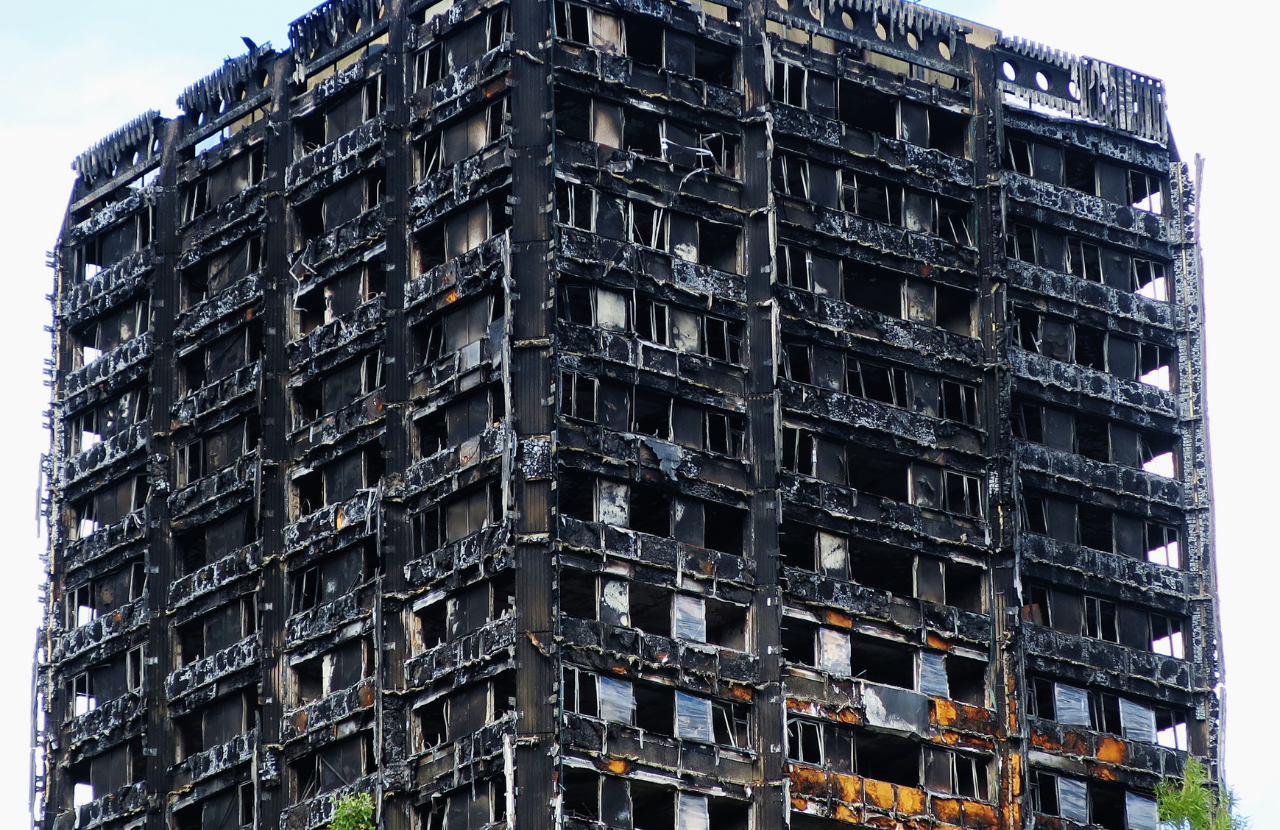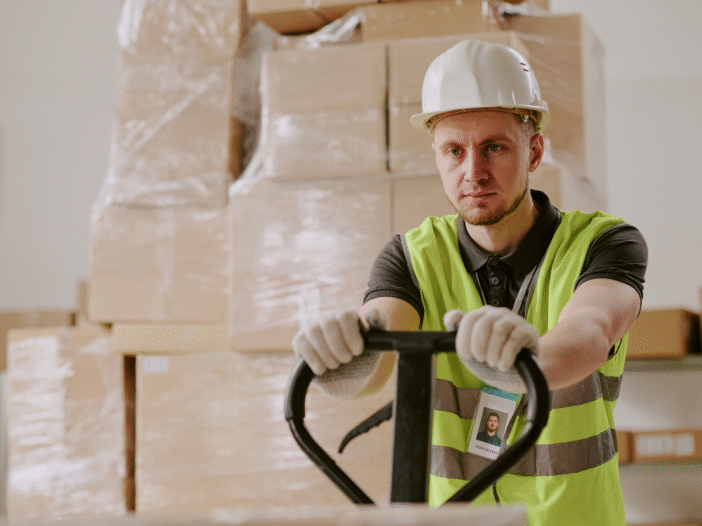
Following the Grenfell final report, new legislation reshaped fire safety law, particularly for high-risk buildings. These laws place great emphasis on duty holder responsibilities, raising key questions such as: what is a duty holder responsible for, how should compliance be demonstrated, and what does competence mean in practice?
This article is based on a webinar which featured Adam Clarke, Managing Director (Consulting) at Praxis42, and guest expert Nick Coombe, Protection Vice-Chair at the National Fire Chiefs Council (seconded from London Fire Brigade). Hosted by James Moore (IFSEC Global/SHP), the discussion explored the role of duty holders and what these responsibilities mean for organisations.
Understanding duty holder responsibilities for fire safety
A duty holder is the person or organisation with control over a building or work activity (such as an employer, building owner, landlord, or managing agent) who is legally responsible for managing the associated risks.
All duty holders have legal responsibilities under fire safety law, but the scope of those responsibilities depends on their role and level of control.
Every duty holder is responsible for:
- Ensuring that the fire safety measures under their control (e.g. alarms, fire doors, lighting, evacuation procedures) are properly maintained and effective.
- Cooperating and sharing information with other duty holders to ensure there are no gaps in fire safety management.
- Appointing or engaging competent people to carry out fire safety tasks on their behalf, where they are not competent themselves.
A duty holder may also be a Responsible Person (RP) or an Accountable Person (AP) under fire safety law, but not always. These roles carry wider, legally defined duties, which we talk about in the next section.
Duty holders who are not RPs or APs still have legally enforceable responsibilities. For example, a landlord, facilities manager, or contractor might only be responsible for maintaining specific systems or precautions. They are not accountable for all fire safety in the building, but they must carry out their part to the same legal standard as an RP or AP.
RP and AP — clarifying responsibilities
A duty holder may themselves be, or may have appointed, a Responsible Person (RP) or an Accountable Person (AP). These roles are specifically defined in law:
- The RP, under the Fire Safety Order, usually covers workplaces and the common parts of residential buildings.
- The AP, created by the Building Safety Act, applies to high-rise residential buildings and carries duties for managing building safety risks and maintaining the “golden thread” of information.
In mixed-use premises, such as flats above a supermarket, both RPs and APs may apply. The law requires co-operation and information-sharing between all duty holders to avoid gaps in responsibility.
Although the legislation sets these duties out clearly, implementation can be challenging. Handovers at the point of ownership or management change are not always complete, and co-operation between multiple duty holders can be inconsistent. Embedding these responsibilities consistently across the sector remains a work in progress.
Competence at the core of duty holder responsibilities
Competence is central to duty holder responsibilities for fire safety. While duty holders do not need to be fire safety experts themselves, they must be able to recognise what competence looks like and ensure that suitably competent people are appointed to carry out assessments and manage risks on their behalf.
Competence goes beyond technical know-how and is the combined effect of training, qualifications, practical experience, and professional behaviours. A competent person understands the technical requirements and recognises the limits of their expertise. They know when to refuse unsafe work and when to bring in specialist support.
Levels of competence must be matched to the nature of the building and its risks. An individual competent to manage fire safety in a low-risk office may not have the depth of knowledge required for a high-rise residential block or a care home, where more complex risks demand enhanced expertise.
The Grenfell final report demonstrated that even technically capable professionals can make flawed decisions when cost or convenience is allowed to outweigh safety and ethics. Competence, therefore, is as much about judgement and integrity as it is about knowledge and skills.
Legislation post-Grenfell
A series of reforms introduced after the Grenfell Tower fire reshaped fire safety responsibilities, particularly in higher-risk residential settings.
Fire Safety Act 2021
The Fire Safety Act confirmed that fire risk assessments (FRAs) for residential buildings must cover the structure, external walls (including cladding and balconies), and flat entrance doors.
Fire Safety (England) Regulations 2022
These Fire Safety Regulations 2022 put Phase 1 recommendations from the Grenfell Tower Inquiry into law. While enforcement focuses on higher-risk premises, regulators scrutinise all building types.
For higher-risk residential buildings the regulations require:
Wayfinding signage for fire and rescue services
High-rise buildings must display clear floor identification and flat indicator signs to help fire crews quickly locate specific areas in smoke-filled or unfamiliar conditions. Signs must be durable, visible in low light, and standardised so they can be understood immediately.
Routine checks of lifts intended for fire & rescue services and equipment
Lifts intended for fire & rescue services and other essential fire-fighting equipment must be checked regularly to ensure they remain operational. Any faults must be logged, reported, and rectified promptly. Records of checks should be kept available for inspection.
Provision of fire safety information to residents
Responsible Persons must give residents clear, accessible information about fire safety in their building. This includes evacuation strategies, instructions on what to do in the event of a fire, and details of fire doors and other key precautions. The aim is to ensure residents know how to respond safely and consistently.
Secure Information Boxes in high-rise buildings
High-rise residential buildings must have a secure information box installed at a suitable location accessible to fire and rescue services. These boxes hold up-to-date building plans, details of fire-fighting equipment, and key contact information. They provide vital intelligence during an incident so crews can act quickly and effectively.
Building Safety Act — Section 156 (changes to the Fire Safety Order)
Section 156 of the Building Safety Act introduced some of the most significant changes to the Fire Safety Order since it was introduced in 2005. The aim is to tighten accountability, improve record-keeping, and ensure that fire safety information follows the life of a building rather than being lost at the point of handover.
These are the key provisions:
FRAs must always be recorded
Fire risk assessments must be written down in every case. The previous exemption for organisations with fewer than five employees has been removed, meaning all responsible persons need to maintain a formal record. This ensures transparency and provides evidence for enforcement or insurer review.
Significant findings must be documented in detail
Reports must go beyond headline conclusions. They need to set out hazards identified, the people at risk, and the specific measures taken or planned to address them. This is to ensure ongoing compliance can be demonstrated.
Fire safety information must be shared with residents
Responsible Persons must provide residents with accessible information about fire safety arrangements in their building. This includes evacuation strategies, how fire doors should be used, and any changes that might affect their safety. The duty is intended to build trust and ensure residents are better informed about the protections in place.
Outgoing responsible persons must hand over records
When responsibility for a building changes (for example, through sale, new management, or restructuring) the outgoing Responsible Person must pass fire safety information to the incoming one. This is part of the “golden thread” principle: ensuring continuity of safety-critical knowledge throughout a building’s life.
Alongside these provisions, there is a statutory duty of competence for anyone conducting a fire risk assessment. For simple, low-risk premises, the Responsible Person may still carry this out themselves. In more complex environments, however, assessments must be undertaken by a suitably trained and demonstrably competent fire risk assessor.
Competence routes and registers
The statutory duty of competence for fire risk assessors makes it essential to show how competence is developed and demonstrated.
BS 8674:2024 – Framework for Competence of Fire Risk Assessors sets out the national standard for demonstrating and maintaining competence in fire risk assessment and fire safety management.
The standard recognises that developing competence requires a combination of structured learning, practical experience, and ongoing professional development. Qualifications within the Regulated Qualifications Framework (RQF) support this progression, from Level 3 certificates through Level 4 or 5 diplomas and on to specialist modules.
Experience, supervision, and quality assurance remain essential, ensuring assessors gain exposure to real-world scenarios, learn from experienced practitioners, and uphold consistent standards in every assessment report.
Read more about the standard in our blog: BS 8674: Fire Risk Assessor Competence
Alongside qualifications and experience, independent certification schemes provide formal recognition of competence. At company level, schemes such as BAFE SP205 and IFC Certification provide assurance that processes and systems meet established standards.
For individuals, options include the Institution of Fire Engineers (IFE) with Engineering Council recognition, and tiered registers from the Institution of Fire Safety Managers (IFSM) and the Institute of Fire Prevention Officers (IFPO).
Specialist expertise in fire risk assessments
Not every aspect of fire safety can be judged by a single assessor. Modern buildings often involve complex materials, construction methods, and legacy issues that require input from other disciplines. A competent fire risk assessment should identify where specialist surveys are needed, incorporate their findings, and translate them into practical actions.
External wall assessments (FRAEW)
External walls must now be addressed within the fire risk assessment. Modern construction is often mixed and complex, involving materials such as ACM, HPL, EPS, tiles, and brick slips. Specialist expertise is essential to assess these systems accurately. Their findings should not simply be appended to the fire risk assessment; they must be interpreted and translated into clear risks and prioritised actions.
Compartmentation
Effective fire risk assessment includes verifying that compartmentation performs as intended. This may involve non-destructive investigations—such as checking above ceiling tiles or within risers—to confirm fire-resisting barriers are intact.
Where necessary, targeted intrusive surveys can provide further assurance. All findings should be clearly reflected in the fire risk assessment, with associated risks and priorities recorded.
Structure and the safety case
If a fire risk assessment highlights structural concerns, specialist engineering input is usually needed. The Building Safety Regulator’s gateways, which control approval before construction and before occupation of higher-risk buildings, are designed to prevent future problems. However, legacy issues such as unsafe cladding, inadequate compartmentation, or poorly designed escape routes still require urgent attention
Cost and scope
When commissioning a fire risk assessment, Responsible Persons should expect transparency in scope and costs. If specialist surveys are needed, time and budget must be built in so that findings can be properly analysed and incorporated.
Competence and CPD
Responsible Persons should expect fire risk assessors to maintain competence through continuous professional development (CPD). A good benchmark is at least 25 hours per year of structured and informal learning. Importantly, CPD should not just record activity but demonstrate how learning has been applied in practice. This provides confidence to clients, regulators, and insurers that assessments are robust and up to date.
Enforcement focus
Fire and rescue services now target their resources through risk-based inspection programmes. If your work involves sleeping risk buildings such as care homes, hospitals, or high-rise residential blocks, audits are a likely part of the landscape.
Regulators increasingly expect to see co-operation in multi-occupied buildings and fire risk assessments that do more than attach specialist reports. The findings must be understood, prioritised, and built into meaningful action plans.
If you believe an enforcement decision is incorrect, it should be challenged. Both Responsible Persons and regulators have access to established complaint and appeal routes and using them helps ensure fairness and consistency in enforcement.
Practical takeaways for responsible and accountable persons
Document your FRA fully—every time
A fire risk assessment (FRA) is only as strong as the record that supports it. Every assessment should be documented in detail, with significant findings clearly set out, actions prioritised, and evidence attached. Regulators will expect to see not just conclusions but the reasoning behind them.
Share information with residents
In residential settings, the duty to inform occupants is now explicit. Residents need clear, accessible information about fire safety arrangements and evacuation strategies. Be ready for greater scrutiny and questions. Transparency builds trust and ensures people know what to do in an emergency.
Secure handovers during change
When ownership or management of a building changes, critical safety information must pass seamlessly to the new duty holder. Keeping the “golden thread” intact avoids gaps in knowledge that could compromise safety or leave organisations exposed.
Choose competent assessors
Competence is central. Fire risk assessors must have the right combination of training, experience, and behaviours. For higher-risk buildings, insist on assessors with third-party certification to provide assurance that the assessment meets recognised standards.
Budget for specialist surveys
Complex buildings often require external wall assessments, compartmentation checks, or structural surveys. These are not optional extras. Make sure budgets allow both for commissioning these surveys and for updating the FRA to incorporate their findings into the overall risk picture.
Maintain co-operation in multi-occupied premises
In buildings with multiple duty holders, collaboration is essential. Fire safety responsibilities overlap, and regulators expect evidence that parties are sharing information and working together to keep the whole premises safe.
Key takeaways
- Understand your responsibilities. Duty holders must be clear on the scope of their legal duties and know when to bring in competent specialists to manage specific risks.
- Collaboration is essential. Share information with other duty holders, coordinate across occupiers, and ensure that fire safety arrangements join up with no gaps.
- Documentation underpins compliance. Keep detailed, up-to-date records of assessments, actions, and handovers. Regulators will expect clear evidence that responsibilities are being met.
Fire risk assessments and duty holder responsibilities
The Grenfell final report and subsequent reforms placed a renewed emphasis on duty holder responsibilities. Whether you are a Responsible Person (RP), an Accountable Person (AP), or another duty holder, you must be able to demonstrate compliance and ensure that risks are managed competently.
At Praxis42, our accredited fire safety consultants deliver fire risk assessment services that help organisations meet their duty holder responsibilities with confidence. We are BAFE SP205 certified for Life Safety Fire Risk Assessment and hold the NSI Gold Award, ensuring the highest standards of professional practice.
Our assessments go beyond compliance, providing clear, practical actions that reflect the specific risks of your building, whether it is an everyday workplace or a higher-risk residential premises.
Find out more about our fire risk assessment services on our website, or contact our friendly team today on 0203 011 4242 / info@praxis42.com

Rob Sherman
Director of Fire Safety
